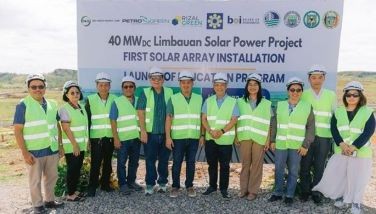Save our endangered languages

Italian director Federico Fellini once said that “[a] different language is a different vision of life.” In a similar, if lengthier, quote, American writer Russell Hoban said that “[l]anguage is an archaeological vehicle, full of the remnants of dead and living pasts, lost and buried civilizations and technologies. The language we speak is a whole palimpsest of human effort and history.”
And yet the diversity of language, and with it the diversity of life and the legacies of our past, is under threat. Research released a few years ago indicated that of approximately 6,500 spoken languages surveyed, over 1,500 were in danger of being lost by the end of the century.
Many of these languages under threat are found within our own shores. In a 2022 social media post, the UP Department of Linguistics shared that of 175 indigenous languages ??of the Philippines, 35 are considered endangered and 11 are on the brink of extinction. During this year’s Buwan ng Wika this August, it’s appropriate to reflect on what can be done to save our endangered languages.
And save them we must, because to lose a language is to lose more than just one method of communication out of many – it is to consign a part of our past to oblivion, and in so doing, lose access to portions of our heritage that could enrich our future. It’s important to realize that much of the creative and adaptive strength of the human race comes from diversity. The cross-pollination of ideas between different languages and cultures is the source of many strokes of creative genius, a phenomenon that is almost always the result of individual and unique ways of thinking that are heavily informed by a particular environment. Language is the very key to thought, and the loss of a language means the loss of a particular way of thinking, unique modes of expressions and codified knowledge.
Societies finetune their language to suit their environment – it’s why communities based in snowy regions have multiple words for snow, for example, just as those which depend on rice would have many specific terminologies used for rice cultivation. These words and names, terms and labels are the repositories of ancient knowledge and tradition. There are stories of gods and monsters native to our islands that will be buried forever should the language used for their epics and rituals die out… and there can be surprisingly practical losses as well. For instance, the book “Dying Words” by Nicholas Evans relates a story where the discovery of a drug, prostarin, that is effective against HIV-type 1 was made possible in part due to a conversation between Samoan tribal healer Epenesa Mauigoa and ethnobotanist Paul Allen Cox about traditional medicinal uses of the stem of a particular tree.
The languages of the Philippines are filled with such encoded stories and knowledge, and it is essential that both private and public sectors do everything we can to protect, preserve and revitalize Filipino languages. This goes beyond the debate on whether the Mother Tongue-Based Multilingual Education should be discontinued, although research continues to show that early learning is easier for children in the language they are most familiar with. Whatever the status of the use of the mother tongue as a medium of instruction, the government should exert efforts to improve the vitality and circulation of other languages used by Filipinos, other than Filipino and English.
Yet for a language to be considered healthy, it must be present in more than just the school – it must be present at home and in the community, in work and at play, in conversation and in the media. This requires institutional support on multiple levels: in finding best practices, providing resources and training, in networking with other groups using the same language. The passion for the revitalization of languages is there, the expertise is there – but the deployment of resources is required to ensure that this passion can be channeled and scaled efficiently.
For example, there are local creators that would love to contribute to the vitality of their language through literary or cinematic work. The use of language in the arts is one of the best ways to promote its use, and eliminate stigma associated with the language. However, art not made in English or Filipino has a smaller audience and hence it can be more difficult to find a publisher, or financing, or a venue for the sale of such work. This is where the government and other organizations need to provide support and incentives, through subsidies, grants or festivals to promote works made in a diversity of Filipino languages, particularly focused on the regions where these are most likely to be used. After all, the more a population begins to see art and media use a given language, the more it becomes accepted and the larger the potential market becomes.
That being said, for languages that are in truly dire straits, the work of preservation may need to take precedence over revitalization. Fieldwork and careful and respectful archiving and recording are needed for this task. Permission must be secured from the communities themselves and, if possible, their involvement in a manner that ensures that their language is accurately represented.
Online archives can be powerful tools both for documentation and access, similar to the Marayum online community dictionary tool of the University of the Philippines, the Talapamana Philippine Registry of Cultural Properties and the Ateneo de Manila’s Multimedia Collection of Philippine Epics and Ballads. In our country, providing online access and exposure to the diversity of our local languages may be the easiest way to raise public awareness.
This month, let us remember that when we speak of “wika,” we should not only consider the official languages of the nation. Rather, we should use this month as an opportunity to look into those languages of our archipelago that are struggling, unsupported and almost forgotten. It is not too late to preserve the diversity and richness of our “different versions of life” and ensure that the heritage of our past continues to be available for our future.
Mabuhay ang mga wika ng Pilipinas!
- Latest
- Trending
























